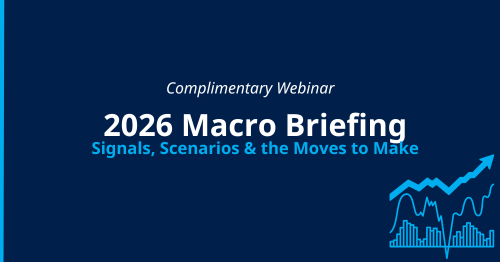
So, your board has made a compelling case for a significant investment in overhauling your digital presence to create a better customer experience which, in turn, should deliver a significant uplift in sales, satisfaction and business success. You assign a healthy budget and let your teams get to work.
Your brand agency comes up with a beautiful looking new customer interface, brimming with tools and content that will transform your business. Your technical team have invested in a new platform with all the bells and whistles, on which they’ll build the experience, before finally deploying it, with much fanfare…
…for about 30 seconds before it’s already looking dated and not fit for purpose.
With hindsight, your teams did everything by the book with the ultimate goal of transforming the customer experience for the better. So it made sense to start with the ultimate vision, the design, and build out from there. Right?
What may seem like a logical way to look at things may in fact set you up for a single static experience that will be impossible to manage in the long term. A Big Bang that quickly fades away. Meanwhile, your customers have many competing demands for their attention and are craving experiences that are personalized, relevant and constantly updated. Now the very same in-house and agency teams that created the shiny, new experience find that they are woefully equipped to keep up with the demand for content and lack the tool-set knowledge to rapidly deploy it.
As odd as it may seem, coming from the CEO of a technology company, a common mistake in digital transformation programs is putting too much emphasis on technology, while undervaluing everything that makes technology actually work—people, processes, culture and mind-set.
With this in mind, there are a few things to consider, right from the start, before you embark on any type of transformation project.
Modern websites are just one element of complex and dynamic networks of functionality and content, meshed together into user experiences that span channels, devices and technologies, on and offline, paid, social, owned and earned. With an expectation of just-in-time relevance and personalization as a baseline, consumers refuse to jump through hoops imposed by corporate silos and they judge each experience by the best in the world, not just the category.
If the experience a customer has with the digital shop window conflicts, jars or simply doesn’t completely align with the mechanics of the product or process then you risk losing them altogether. Banking and financial services are a particular culprit for luring in customers with fancy consumer advertising and then failing to deliver on the promised experience with online banking. This is a huge reason why the neo-banks and fintech companies have really captured market share over the last few years. Traditional companies, even beyond finance could learn much from the seamless onboarding experiences, always on customer service and continual iteration and improvement that these challenger banks are demonstrating. They show how constant adaptation and evolution is the new normal in customer experience.
Now, I’m not suggesting technology investment needs to be an open checkbook but equally dumping your whole budget into one big project and then neglecting continual improvement will prove a false economy. Transformation is a long-term relationship, not a one-night stand. Even for a single coherent brand with very little market segmentation, developing the capability to evolve experiences over time takes significant investment in technology and services. From data to analytics, targeting and personalization, web, mobile, email, social and more. At the other end of the scale, the tooling required to allow multi-channel, multi-brand experiences to be effectively orchestrated and optimized over time is complex and expensive.
Developing core digital experience management capability within each of those brands to cope with all of this dynamic change is simply unsustainable. For a global FMCG you could be talking about hundreds of brands. You either do it and spend so much money you’re eating into margins, or you fail and generally fall behind.
The reality is that clients are shifting their perception of value from the design of the experience to the capability that makes it possible. Rather than starting with design and build, smart organizations are looking for help to implement the technology and opting for solutions that allow them to activate and evolve experiences over time. With the right technology platform, companies can both centralize investment in capability (freeing up cash for brands to focus on experiences) and achieve the agility to stay ahead of the game.
However, even with a centralized platform in place, you still need to consider who is actually going to own and operate this shiny new tech? How will you maintain standards and create a cohesive approach across different parts of the organizational matrix to deliver a consistent experience. When you start to think about what happily ever after will look like, you need to start with your people. You will need to overhaul skills, processes, culture, alignment, funding, organisational structures. It can be painful, but it’s a very necessary process. In other words, think less about the MVP and more about the MVS. Ask what is the Minimal Viable Service that experience delivery at scale requires.
Getting these elements worked out is just one step of an iterative journey and to get buy-in, as a senior leader, you need to corral your teams and get them to focus on the endgame of transformation, rather than on the game of transformation itself. In my experience the key drivers fall into one of four buckets: improving brand equity, growing revenue, reducing the cost of delivery or growing customer preference. Reinforce the reason for change and make success measurable.
Finally, make change tangible to people and not just assume that they’ll “get it”. As a CEO or business leader you benefit from having the profile and pulling power to galvanize change. Lead by example, commit to the changes that need to be made personally and you will find that your teams will follow.
Read more: The Trouble With Business Transformation




0

1:00 - 5:00 pm
Over 70% of Executives Surveyed Agree: Many Strategic Planning Efforts Lack Systematic Approach Tips for Enhancing Your Strategic Planning Process
Executives expressed frustration with their current strategic planning process. Issues include:
Steve Rutan and Denise Harrison have put together an afternoon workshop that will provide the tools you need to address these concerns. They have worked with hundreds of executives to develop a systematic approach that will enable your team to make better decisions during strategic planning. Steve and Denise will walk you through exercises for prioritizing your lists and steps that will reset and reinvigorate your process. This will be a hands-on workshop that will enable you to think about your business as you use the tools that are being presented. If you are ready for a Strategic Planning tune-up, select this workshop in your registration form. The additional fee of $695 will be added to your total.

2:00 - 5:00 pm
Female leaders face the same issues all leaders do, but they often face additional challenges too. In this peer session, we will facilitate a discussion of best practices and how to overcome common barriers to help women leaders be more effective within and outside their organizations.
Limited space available.

10:30 - 5:00 pm
General’s Retreat at Hermitage Golf Course
Sponsored by UBS
General’s Retreat, built in 1986 with architect Gary Roger Baird, has been voted the “Best Golf Course in Nashville” and is a “must play” when visiting the Nashville, Tennessee area. With the beautiful setting along the Cumberland River, golfers of all capabilities will thoroughly enjoy the golf, scenery and hospitality.
The golf outing fee includes transportation to and from the hotel, greens/cart fees, use of practice facilities, and boxed lunch. The bus will leave the hotel at 10:30 am for a noon shotgun start and return to the hotel after the cocktail reception following the completion of the round.